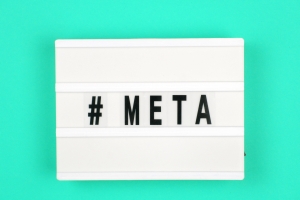What is a Meta Description, and How Does it Work?

Meta descriptions are the brief statements accompanying your website’s URL in search engines. They are written by the SEO team and are meant to guide people to your website when they search for a particular keyword. Meta descriptions can be helpful for SEO purposes, but they can also be used to promote your brand and create a sense of trust with the reader. Meta descriptions offer a unique opportunity to promote your brand and develop confidence. with the reader. A good meta description can entice readers to click on the link. you provide, making your content much more likely to convert.
Write Your Meta Description Today!
Meta descriptions are the most essential part of your website title tag. They are small snippet that is shown in search results and provide a summary of what your website is about.
Meta descriptions are not just for SEO purposes but also to help people quickly find the content they need. If you write a good meta description and use keywords, you will have better chances of getting traffic from search engines.
If you want more traffic from Google, ensure your content titles are concise and relevant to the topic. Use keywords in your tags and make sure that they sound natural.
Choosing the Best Content Title Tag For Your Website
Choosing the best title tag for your website ensures content is easily found. There are a few things to keep in mind when searching for the perfect title tag:
– Keep it short and sweet. This will help your content stand out from the crowd.
– Make sure you pick a keyword that relates to your niche but doesn’t overdo it. You want your title tag to be easily understood by search engines, not just humans.
– Make sure your title tag is allowed by the search engine you’re using (Google, Bing, Yahoo)
Best Way To Write Effective Titles of Your Content
The title of your blog post is the first thing that users will see, which is a significant factor in getting their attention.
The best way to write compelling titles for your content is by considering the following factors:
- Make it catchy and engaging – It should catch the reader’s attention.
- Make it short yet informative – This helps them understand what they will read about without reading too much.
- Use keywords – These words help people find your content more easily on search engines like Google, Bing, etc.
- Add a call-to-action – This helps them know what to do next to make a purchase or get more information from you.
Follow Our Advice To Create Successful Web Titles

Writing compelling and engaging web titles is not easy. Creating a title that will grab people’s attention and convince them to click on it requires much effort. But, if you follow our advice, you can create successful web titles that convert visitors into customers.
- Create a headline that is true to your audience.
As mentioned, the title is vital in deciding whether a visitor will click on it. If you are offering content that relates to something that your audience cares about, then you don’t want to create an off-putting title like “How To Make Extra Cash In Your Spare Time When You Have Nothing Better To Do” because you know people won’t be interested in clicking on it. But, if you were promoting content related to makeup tips and tricks, then “5 Simple Ways To Make Yourself Look Better In A Few Seconds” might be a more appropriate title.
- Keep it short.
The shorter, the better for most web titles. People are usually busy, so they’ll appreciate it if you give them less information to read and digest with click-bait headlines like “How to avoid the busiest shopper in your life” or “#1 reason why you get offended so easily”. If people have to read through an entire page of text before deciding whether to click on it, chances are high that they won’t want to because it would take too much time.
- Use numbers or percentages.
Numbers or percentages give readers a sense of what the article is about and can also help them understand how important it is to read that article, which will increase your click-through rate (CTR).
- Include an exciting word in the title for viewers to be interested in reading it.
The most effective word to include in your titles is usually “free” because people will be more inclined to click on something if it’s free rather than paid content.
- Avoid using words like “however” and “but.”
Using these words makes readers feel like they have to continue reading to find out what follows the word “however” or “but.”
- Keep it concise for maximum impact and readability.
Your headlines should not be wordy or vague because people will get bored quickly with long text that doesn’t indicate what the article is about until it’s too late for them to continue reading.